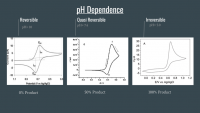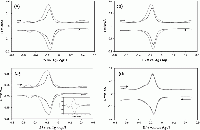Difference between revisions of "Cyclic Voltammetry"
Jump to navigation
Jump to search
| Line 15: | Line 15: | ||
{| | {| | ||
|[[File:B711049a-f2.gif|200px|thumb|left|Redox properties of undoped 5 nm diamond nanoparticles (Phys. Chem. Chem. Phys., 2008,10, 303-310)]] | |[[File:B711049a-f2.gif|200px|thumb|left|Redox properties of undoped 5 nm diamond nanoparticles (Phys. Chem. Chem. Phys., 2008,10, 303-310)]] | ||
| − | |[[F7.large.jpg|200px|thumb|left|Performance of a Non-Aqueous Vanadium Acetylacetonate Prototype Redox Flow Battery: Examination of Separators and Capacity Decay (J. Electrochem. Soc. 2015 vol. 162 no. 3 A363-A372)]] | + | |[[File:F7.large.jpg|200px|thumb|left|Performance of a Non-Aqueous Vanadium Acetylacetonate Prototype Redox Flow Battery: Examination of Separators and Capacity Decay (J. Electrochem. Soc. 2015 vol. 162 no. 3 A363-A372)]] |
|#3 | |#3 | ||
|} | |} | ||
Revision as of 19:14, 26 April 2017
Cyclic voltammetry is a method to oxidize and reduce chemical species using an electrical current. During this experiment, the voltage (x-axis) is ramped and the current (y-axis) is measured.
Pine Instruments Handout for "Determination of Acetaminophen in Children's Pain Relief Elixir"
Examples:
| #3 |



